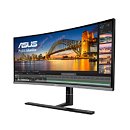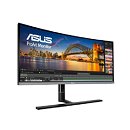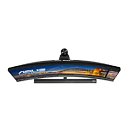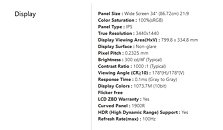Monday, March 11th 2019

ASUS Releases ProArt PA34VC Professional Monitor - 21:9, 3440 x 1440 10-bit IPS Panel, HDR 10, 1900R
ASUS today released the latest into their line of ProArt monitors, especially geared for professionals, where color accuracy is paramount. The ProArt PA34VC features a 21:9 aspect ratio over a 3440 x 1440 IPS panel, which guarantees double the widescreen space of conventional 1080p monitors. The panel already comes factory-calibrated, so there's no need to mix things up in post-buy tinkering (though it does support ASUS' ProArt Calibration Technology,
There's HDR 10 VESA certification with 100% sRGB color gamut coverage, dual Thunderbolt 3 ports for video connectivity and data-transfers at speeds of up to 40 Gbps. These Thunderbolt ports also enable Power Delivery of up to 60W to external devices. It also features built-in Picture-in-Picture (PiP) and Picture-by-Picture (PbP). Gray-to-gray response time is being rated at 0.1ms, according to ASUS, while typical brightness caps out at 300 cd/m².
Source:
ASUS
There's HDR 10 VESA certification with 100% sRGB color gamut coverage, dual Thunderbolt 3 ports for video connectivity and data-transfers at speeds of up to 40 Gbps. These Thunderbolt ports also enable Power Delivery of up to 60W to external devices. It also features built-in Picture-in-Picture (PiP) and Picture-by-Picture (PbP). Gray-to-gray response time is being rated at 0.1ms, according to ASUS, while typical brightness caps out at 300 cd/m².





21 Comments on ASUS Releases ProArt PA34VC Professional Monitor - 21:9, 3440 x 1440 10-bit IPS Panel, HDR 10, 1900R
That said, I have to see a professional mastering content on a curved display. Last I checked, focal plane curvature in lenses was still a defect, you know.
I have never seen great HDR on a LCD panel.
And besides motherboards, their QC seems to be all over the place.
Also, I don't think they don't understand what makes a premium or professional product. It's just that their game is more like "use this slightly off mainstream component, slap on a nice sticker and people will be more than happy to pay a premium for that".